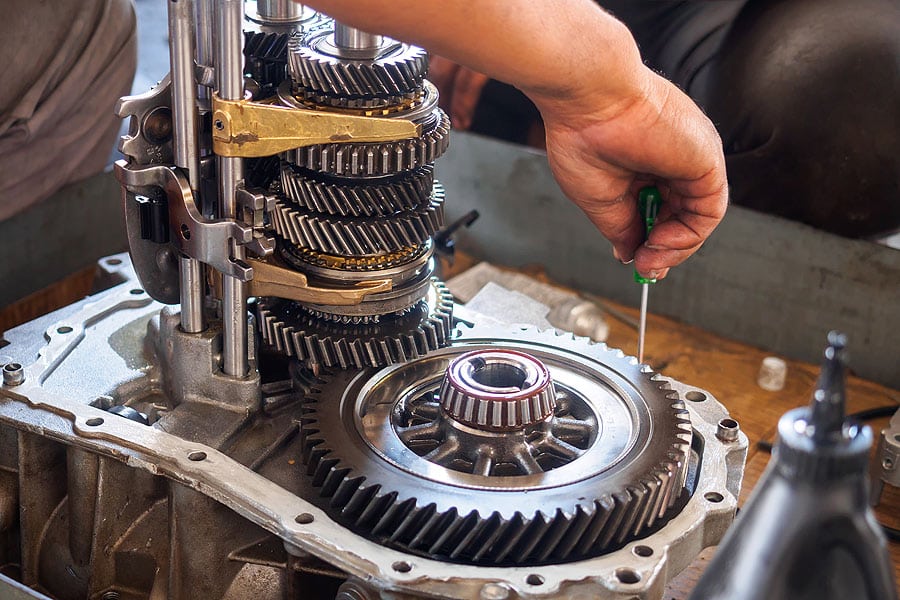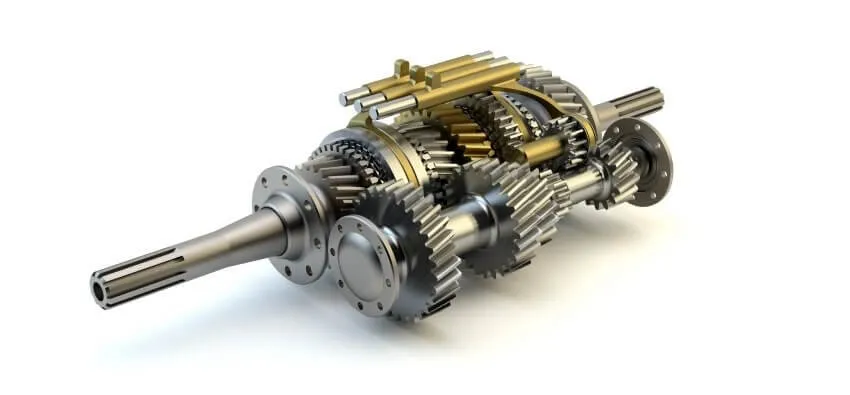Regardless of its type, the function of the gearbox is to transmit the energy from the engine to the vehicle's wheels. It must therefore be in perfect working order at all times. However, there are cases where it is necessary to replace it. Although they are quite rare, these situations should be taken into consideration as soon as possible. Find out what circumstances may justify a changeover and what solutions are available. shop Find out more about the circumstances that may warrant a change and the solutions available to you to ensure the performance of your transmission.
Impeccable service
Boite de vitesses cassée ? Nous vous aidons à trouver et commander votre modèle
What are the signs of gearbox failure?
It goes without saying that you do not change a perfectly functional part. If the gearbox is to be replaced, it must be because of a fault that affects its performance. On the other hand, you should be aware that faults put your safety at risk. When they are critical, you risk losing control of your transmission. As a result, your vehicle will stop responding as you want it to. That's why you need to start by knowing the common symptoms of a transmission failure. Here are some indicators, but not all of them:
- you have difficulties in engaging in manual reporting
- the gear lever no longer responds to your inputs
- you smell a burning smell coming from the transmission system
- in neutral, the transmission system makes strange noises
- gears start to skip while driving
- the gearbox is squeaking
- the indicator light on the dashboard flashes or lights up continuously
- gearbox manipulation causes unusual noises
- the automatic system engages inappropriate relationships
- you notice an oil leak
- your vehicle becomes less responsive
- etc.
It should be noted at the outset that these signs do not necessarily mean that the gearbox needs to be replaced. However, it is impossible to know the extent of the damage unless the vehicle is checked. As soon as you notice any unusual signs, you should make an appointment to see a professional. It is also common sense to stop driving the car until the faulty gearbox has been properly repaired.
How can you distinguish between clutch failures and gearbox failures?
The two systems are interdependent, so yes, it is quite possible to confuse the warning signs. However, contrary to popular belief, there is only one common symptom of clutch and gearbox problems. It is the difficulty in engaging the transmission gears.
Clutch system malfunctions manifest themselves in different ways. Most often, the pedal becomes soft or, conversely, is extremely hard. In both cases, it is difficult or impossible to operate, which makes it difficult to shift gears. It is also possible that the clutch slips and that the symptom increases over time or that you feel vibrations in the pedal, for example. The clutch may also overheat, squeal, jerk... You are not wrong if you suspect a clutch system failure. The good news is that the gearbox works perfectly well.
Nevertheless, if you have any doubts, the best thing to do is to ask for a diagnosis from a professional who knows all the secrets of car mechanics. Don't wait forever! Have your car checked as soon as the first signs appear. You will be sure of this and you can arrange to have the gearbox that is causing you problems repaired or replaced.
What is the average life of a gearbox?
The gearbox is one of the strongest parts of your car as it is theoretically designed to last a lifetime. In other words, the gearbox should remain functional for the life of your car. In fact, it can be used for more than 300,000 km without a hitch, provided it is properly maintained and you pay attention to how you use it.
Even if you adopt a flexible driving style and pay attention to regular maintenance, it is impossible to completely exclude the risk of breakdown. Sometimes it only takes a little too much force on the gearbox, or a shock to the gearbox, for failures to occur.
How do I replace a gearbox?
The operation is much more complex than you might think because a series of precautions must be taken before, during and after the replacement of the failed part. There is a protocol to follow, which depends on the type of gearbox your vehicle is fitted with and also on the exact model. In the case of an automatic gearbox, for example, the layout of a continuously variable gearbox is not the same as that of a single or dual clutch model. In the case of a mechanical gearbox, the number of gears influences the architecture of the part.
Unless you are trained as a car mechanic, do not try to take matters into your own hands. The problem can get worse if you make a handling or assessment error. This is not to mention the fact that you are putting your own safety at risk.
The list of professionals who can replace a gearbox is very long. You can turn to a craftsman in your neighbourhood. You can also get advice from the dealer, who will tell you which workshops are approved in the area where you live. Car centres are also very good options. In any case, make sure you compare several offers to get the best possible value for money. On the other hand, always check the qualifications of the craftsman before entrusting him with your vehicle. He must have all the knowledge and skills required for the work to be carried out.
Once you have made an appointment, go to the garage or workshop. Explain the gearbox problems you are experiencing. The professional will probably ask you a few questions to better understand the situation. Try to give clear and detailed answers.
A competent professional will not begin removal unless he or she is certain that this is the only, or at least the best, way to restore your vehicle to full performance. A diagnosis is essential to understand where the fault is coming from and how to fix it. The signs of failure that you have reported will guide the mechanic in the fault finding process. He will thoroughly inspect the mechanical, electronic and electrical components of the gearbox to ensure that it is not a minor fault that can be resolved with a few adjustments and/or repairs.

Unsurprisingly, the gearbox will be removed gradually. The mechanic stabilises the vehicle before methodically removing all the fasteners. He should proceed according to the gearbox diagram, which varies according to the model.
Once the faulty box is removed, the replacement product can be installed. Here too, care must be taken and the steps carefully followed.
After installation, the mechanic still has to carry out a series of checks. He makes sure that all the components are correctly fixed, he adds lubricant according to the viscosity recommended by the car manufacturer. He then carries out tests to ensure that all gears are shifting correctly, that there are no suspicious noises or other anomalies. Reconfiguration of the system is usually necessary when an automatic gearbox is involved.
It is only after a long process involving the use of advanced tools and the deployment of strong skills that the replacement is considered effective. This can take several hours or a few days, especially if you have to wait for the replacement gearbox to become available. It is therefore important not to rush the mechanic. It is better that he takes the necessary time to ensure that the transmission system is fully functional after the gearbox has been changed.
How much does it cost to replace a gearbox?
From the outset, you should be aware that the price to be expected is determined on a case-by-case basis. There can be significant differences between the price of the gearbox and the cost of labour.
When the need to change the gearbox is confirmed, the professional will provide you with an estimate. He will only start the repair once you have accepted the quotation, which gives you time to compare several proposals. Pay attention to the content of the repair estimate. If the quotation mentions the price of a new gearbox, this means that the garage will place the order itself. The price quoted usually includes a commission. However, you can save money by making the purchase yourself.
Ask the garage to give you the gearbox reference. This will make it much easier to find a compatible part. Then start your search by choosing a specialist shop such as EDEN BOITES, European market leader for the gearbox.
The results of your online search may come up with different prices. This is because the products do not have the same characteristics. Used gearboxes are the cheapest. They have not undergone any repairs but have been thoroughly inspected by technicians who guarantee that they are in perfect working order. Moreover, a minimum 3-month guarantee is offered by EDEN BOITES on used products. We go upmarket with standard exchange gearboxes as they are perfectly operational and have no defects. The warranty goes up to 12 months. The customer reviews will help you to get an idea of the quality of our services, knowing that we are committed to offering the best products at the lowest prices.
You have checked but no product matches your gearbox reference? Don't panic. You can find out when the part number will be available in stock. However, this may take some time. If you are in a hurry to drive a fully functioning vehicle, it is much better to consider reconditioning your gearbox. You don't need to buy a new or used part. It's your gearbox that will be rebuilt in a workshop by a team of experts. To do this, you must ask your garage to drain the gearbox and then dismantle it. The defective product must then be secured on a transport pallet. We will then arrange for it to be collected and transported to our premises. Once your gearbox has been rebuilt to 0 km, we will return it to you, mounted on a pallet.
Request your free online quote to find out the price of the gearbox and the cost of delivery to the address of your choice. Delivery is possible anywhere in France and Europe. To save time and reduce handling constraints, remember to enter the address of the garage where your gearbox will be replaced directly. The garage's invoice will then be limited to the labour costs.
How often should the gearbox be drained?
Changing the oil in your gearbox is part of routine maintenance. In the case of a manual gearbox, it is a good idea to schedule the first oil change as soon as you have passed the 100,000 km mark. Thereafter, changing the oil every 50,000 km or so, or every five years, should be sufficient to protect the transmission system from breakdowns. If your car is equipped with an automatic transmission, the number of kilometres to be covered before the first oil change is defined by the manufacturer. The information is recorded in the vehicle's service booklet, but as a guide, it is regularly carried out every 25,000 km to 50,000 km.
Always follow the recommended intervals, as your gearbox needs a sufficient amount of clean oil. Even though it is considered as a whole, the gearbox is actually a collection of several gears and parts that work permanently until the car stops. Continuous friction can cause the many gears to heat up and wear. Thegearbox oil is therefore used to cool them down and also to lubricate them.

As it is used continuously, the oil decreases. As it dwindles, lubrication becomes more difficult. It is therefore essential to check the oil level at regular intervals. When necessary, a gearbox oil refill should be carried out. However, whether or not a refill is necessary depends on how dirty the lubricant is. Used oil must be replaced, which means that an oil change is necessary.
Please note that the gearbox oil change is independent of the engine oil change. Not only are the recommended frequencies different, but the type of oil used is not the same. There are a few warning signs that may indicate that it is time to change the oil in the gearbox:
- reports are difficult to get through whether hot or cold
- you hear cracking noises every time you change gear
- the gears jump when you do not intervene on the transmission mechanism
- you notice oil marks on your parking space or on the roads you have driven on
- the reaction time of your automatic gearbox at cold start is longer than normal
- jerks are felt when starting up and/or jerks are felt during acceleration.
We would like to point out that other symptoms may indicate faults that require an oil change. These same signs may also indicate that your gearbox needs to be replaced with a better performing part.
Are there any tips for extending the life of the gearbox?
Yes, you can take care of your gearbox so that it retains its "unlimited" life. Some simple reflexes can be applied to avoid having to change the manual or automatic gearbox.
As mentioned earlier, fluid levels should be checked regularly. Do not wait for malfunctions to appear before carrying out checks, as it is always better to be over-cautious than to suffer the consequences of negligence.
If you notice any unusual signs, don't waste time! Make a note of the anomalies and refer them to a professional who can check the condition of the gearbox and determine what is wrong with it.
Listen to your vehicle. Literally, you need to be able to distinguish between normal driving noises and unusual sounds. Figuratively, you should pay attention to any behaviour that seems unfamiliar.




